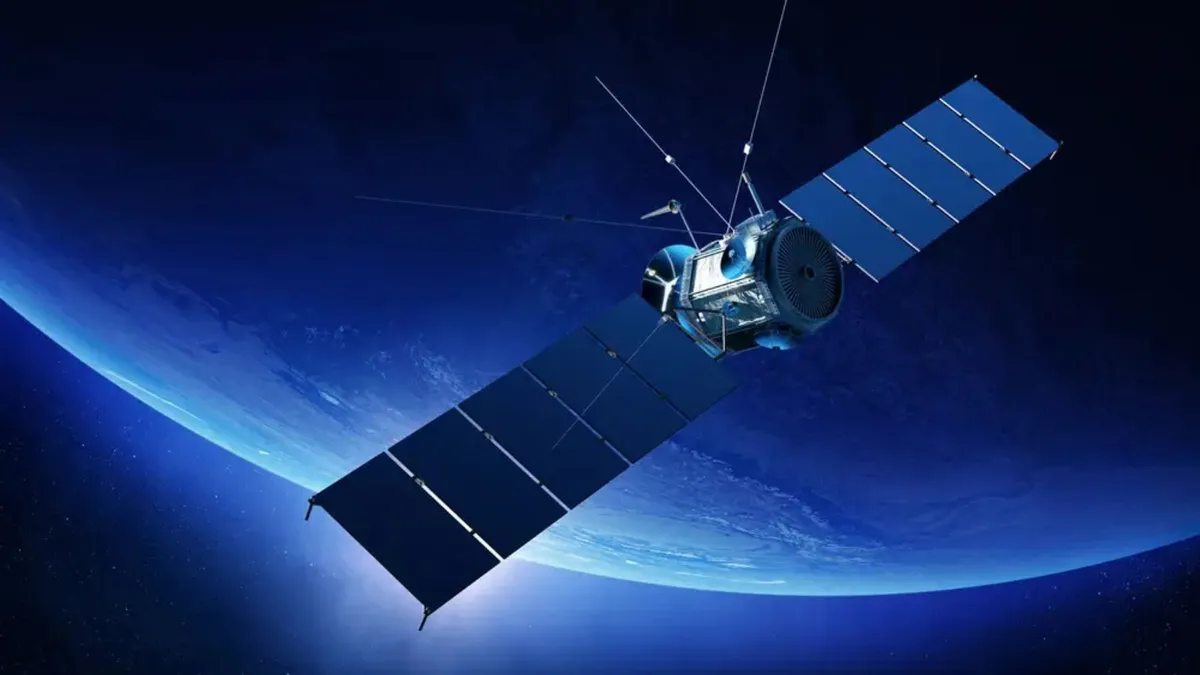
As satellites re-enter the Earth's atmosphere, they encounter intense heat and pressure, leading to the oxidation of various metals, including aluminium. Small satellites in Low Earth Orbit (LEO), such as those from the Starlink constellation, are particularly affected due to their composition and operational lifespan. Typically, these satellites have a service life of about five years, and since the launch of the first batch of 60 Starlink satellites in May 2019, many have been decommissioned and re-entered the atmosphere.
According to the European Space Agency (ESA), there are over 28,000 objects currently in space, with a significant number in Low Earth Orbit. In recent years, around 8,000 Starlink satellites have been launched to meet the increasing global demand for internet coverage. SpaceX is leading the charge, having received permission to launch an additional 12,000 Starlink satellites, with plans for a total of 42,000. Competing companies, including Amazon, are also developing their satellite constellations, which may range from 3,000 to 13,000 satellites.
January has seen a notable increase in satellite re-entries. During this process, aluminium within the satellites transforms into aluminium oxide, which poses a significant threat to the ozone layer. LEO satellites typically orbit at altitudes between 550 and 1,200 km. Once their operational life ends, they are intentionally decommissioned to prevent the accumulation of space debris. This method reflects a responsible approach to maintaining space sustainability.
Upon re-entering the atmosphere, satellites travel at speeds around 27,000 km per hour. This rapid movement generates extreme heat due to aerodynamic friction, resulting in the disintegration of the satellite and the vaporization of most components. The design of these satellites ensures they burn up almost entirely before reaching the Earth's surface, minimizing the risk to people and property. However, scientists caution that this burning process is not environmentally neutral.
During the re-entry of satellites, particularly those like Starlink, the aluminium—comprising about 40% of the satellite's mass—undergoes chemical transformations. Research indicates that a typical Starlink satellite, weighing approximately 250 kg, produces around 30 kg of aluminium oxide particles upon re-entry. While these particles are not large debris, they exist as microscopic nanoparticles that remain suspended in the upper atmosphere for extended periods.
The re-entries generally occur in the mesosphere, located 50 to 80 km above the Earth's surface. Scientists have raised alarms about the long-term effects of these aluminium oxide nanoparticles, particularly regarding their potential impact on the ozone layer. Researchers from the University of Southern California have found that aluminium oxide can act as a catalyst for chemical reactions involving chlorine, similar to the mechanisms that historically led to ozone depletion from chlorofluorocarbons (CFCs).
Recent studies have highlighted a concerning trend regarding the increase of aluminium oxide in the atmosphere related to satellite re-entries. In February 2023, NASA conducted high-altitude test flights over Alaska, revealing that 10% of collected stratospheric sulphuric acid particles contained aluminium and other metals from satellite and rocket re-entries. This finding confirms that space hardware is leaving a detectable chemical signature in the atmosphere.
Researchers noted an alarming eightfold increase in aluminium oxides in the atmosphere between 2016 and 2022, coinciding with the rapid proliferation of satellite constellations. In 2022 alone, re-entries contributed an estimated 41.7 metric tonnes of aluminium to the atmosphere—30% more than the natural inputs from micrometeoroids. If current deployment rates continue, aluminium oxide releases could escalate to 360 metric tonnes annually, marking a staggering 646% increase over natural levels.
The implications of these findings are grave, particularly due to the time delay involved in environmental effects. Molecular dynamic simulations suggest that aluminium oxide particles created in the mesosphere may take 20 to 30 years to descend into the ozone layer, meaning the impact of today’s satellite re-entries could remain undetected for decades. By the time measurable ozone depletion is observed, the mesosphere could be overwhelmed with aluminium oxide particles, perpetuating adverse effects on ozone chemistry for years.
Some studies predict that these particles could contribute to an additional 0.05% loss of ozone over Antarctica annually. While this percentage may seem minor, it poses a significant risk of delaying or reversing the anticipated recovery of the ozone layer.
Despite the growing concerns, experts emphasize the lack of a comprehensive regulatory framework to address the atmospheric impact of satellite re-entries. The U.S. Federal Communications Commission (FCC) licenses satellite mega-constellations but does not consider re-entry debris or ozone depletion in its regulatory assessments. Furthermore, commercial satellites are exempt from environmental reviews under the National Environmental Policy Act (NEPA).
On a global scale, while discussions are underway at the UN Committee on the Peaceful Uses of Outer Space (COPUOS) regarding guidelines for space sustainability, progress has been slow, and there remains no binding international agreement addressing pollution from satellite re-entries.
Experts advocate for coordinated action among stakeholders to tackle these challenges. They propose that satellite manufacturers explore alternatives to aluminium or develop spacecraft capable of being boosted into higher graveyard orbits instead of allowing them to re-enter the atmosphere. Graveyard orbits are designated for decommissioned satellites to minimize collision risks with operational satellites and reduce space debris.
While this approach may require additional onboard propellant and could delay the problem rather than eliminate it, initiatives are underway. Reports indicate that the ESA is in discussions with SpaceX to join an international effort aimed at reducing space debris as part of the ESA's Zero Debris initiative, which aims to prevent the generation of new orbital debris by 2030.